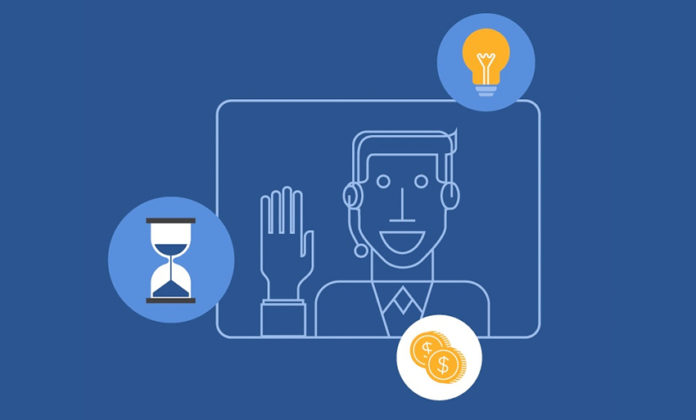‘Disruption’ is the golden word for any startup in any industry, and Insurance is no different. A company that truly ‘disrupts’ is automatically seen as the next big trend and the new frontier that everyone is suddenly scrambling to meet. Today, a huge part of reaching this new frontier is the migration of insurance sales from in-person to online.
The problem? It doesn’t currently work.
At its core, the insurance industry has a distribution issue. Although it has net premiums surpassing $1.2 billion, 64% of American homes are underinsured, and 40% of Americans who have life insurance believe they don’t have enough. So if there is such a huge untapped market what is being done to bridge the gap? Why isn’t insurance selling like “hotcakes”?
The biggest issue is that insurance is still very largely sold and not bought. A new buyer is unlikely to know exactly what they are looking for until they’ve completed the necessary research, which they are unlikely to be able to do on their own because of the sheer number of options and opportunities! This is where the seller comes into the picture. The seller, an expert in insurance, is able to hear and understand buyers complete picture, their individual story. From there the seller is able to personally craft the sale guiding the buyer toward the appropriate package that the buyer now thinks was designed just for them. This human seller, therefore, becomes the catalyst that leads to a truly personalized sale.
Online insurers of the future must find their perfect blend of human interaction and internet automation. Moving the selling of insurance online comes with an increase in the speed of each transaction, a significant reduction in cost, and a vast workspace for competitive innovation.
Faster Transactions
In general, the most obvious advantage of moving any process online is the faster and more widely available transactions that move at the speed of the customer. People love consuming goods online because they expect inherent speed. Research phases, in particular, are considered ‘boring’ by many consumers who want a faster way to zone in on their ideal plan. Although they want to find and choose their insurance online to complete the task faster, their lack of expertise requires an expert to validate their selections. This is where finding a balance between online automation and human interaction, be it through online means like video chat, becomes vital.
Speed also comes in the form of lower drop-off rates during initial client funneling. Because companies recognize that consumers need human interaction even as they prefer to buy online, many have turned to a highly ineffective solution in the form of online surveys that require potential clients to leave their contact information to be called back at another time. As a result, by the time the call actually happens, the consumer will have moved on or lost interest. By creating an engagement center that utilizes online sales representatives, companies can capture clients right as they become interested in the product and lead them through a quicker online insurance sale. Because the consumer is no longer required to put in as much effort to travel and speak to a seller in person, they are far more likely to work further through a sales funnel.
Cost Reduction
Outbound sales has been the widely accepted way to sell insurance in the past, but selling online opens doors to far more opportunity to reach customers. Moving online allows insurance companies to change their marketing model from outbound sales to inbound sales and marketing. In other terms, sourcing clients through cold calling and outreach programs with low success rates and high commission costs. The future is with inbound marketing tactics such as content production and online advertising.
After these leads are sourced without the moneys spent on outbound sales funneling, engagement centers can be used to personalize the sale through online channels. According to a 2013 study by LIMRA and The Life Foundation, 50% of respondents preferred face-to-face interaction when buying insurance. Luckily, e-commerce has already surpassed this obstacle with technology such as video chat, which offers such consumers the best of both worlds. This technique is becoming increasingly important for sellers of more expensive, consultative items and is easily transferable to other industries. The result is personalized human interaction with the speed of technology, minus the costs of in-person information and paperwork processes.
More Room for Innovation
Talking about innovation loops us back to the idea of total industry disruption and the importance of incorporating new technology and ideas into any company. Insurance companies must compete on all levels with technology directly linked to the company’s backbone. This has been done successfully in the past from mediums like 3rd party software to simply redesigning a website. However, the future for companies that don’t innovate is far less forgiving. Technology is disrupting industries faster than ever and insurance is primed for disruption.
Features that can compare policy prices across multiple insurance companies (like Google Compareand Policy Genius) allow for a huge leap forward in the initial research process. Selling online can also make it significantly easier to add a section that companies can use to leverage gadgets to ward off insurance payouts like Fitbit (keeping policyholders healthy enough to avoid using their health insurance) and Progressive Snapshot (encouraging drivers to drive very safely by offering discounts to accident-free policyholders). While omnichannel sales platforms like Glia allow for a personalized customer experience through engagement centers. Lastly, even simply having a clean, easy-to-use, attractive, and modern user interface can give the entire brand a makeover.
Selling insurance online doesn’t work right now – but this doesn’t have to be the case. The solution is to understand the balance between an automated internet processes and personalized human interaction. The advantages, like faster transactions, a heavy reduction of costs, more room for innovation, and company survival are more than worth the switch.





